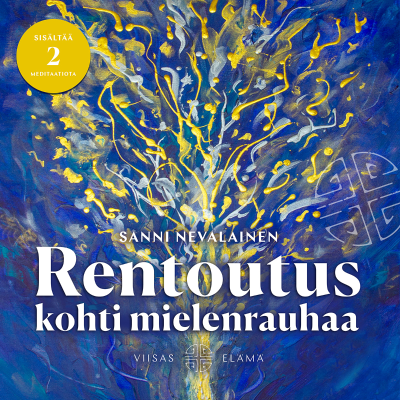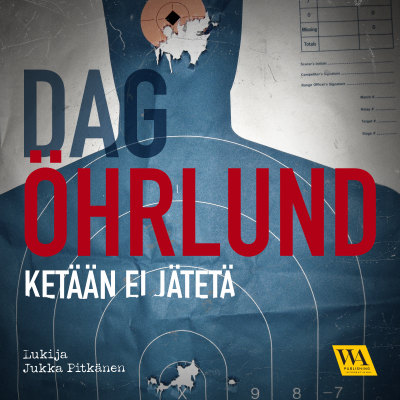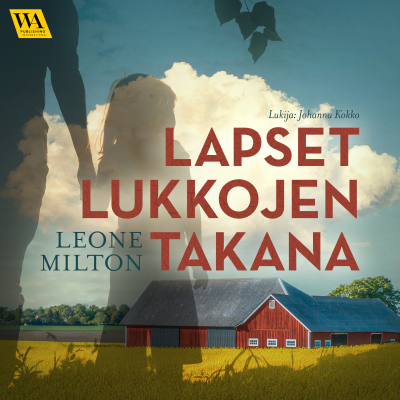
Nerds for Humanity Substack Podcast
Podcast by Nerds for Humanity
Rajoitettu tarjous
2 kuukautta hintaan 1 €
Sitten 9,99 € / kuukausiPeru milloin tahansa.

Enemmän kuin miljoona kuuntelijaa
Tulet rakastamaan Podimoa, etkä ole ainoa
Arvioitu 4.7 App Storessa
Lisää Nerds for Humanity Substack Podcast
Takeaways from some of the best long-form podcasts / livestreams on Nerds for Humanity. Usually interviews with interesting and thought provoking guests about politics. nerdsforhumanity.substack.com
Kaikki jaksot
220 jaksotHello nerds. When I first started interviewing Scott Santens years ago during the Nerds for Yang era, he was one of the most relentless and articulate advocates for universal basic income (UBI) in America. Back then, it felt like the country was on the verge of something big. Andrew Yang was on the debate stage making “Freedom Dividend” a household phrase. Silicon Valley technologists were whispering about automation in the same breath as moral responsibility. Even Republican voters were entertaining the idea that direct cash transfers might be less bureaucratic and more empowering than sprawling social programs. Fast forward to 2025, and the conversation feels quieter. The pandemic-era stimulus checks are long gone. Washington has reverted to tribal warfare. Meanwhile, AI is advancing faster than anyone—maybe even Scott and Andrew —predicted. The irony is thick: the very forces that made UBI seem like a radical idea a decade ago are now transforming entire industries before our eyes. And yet, the movement feels stuck in neutral. So when Scott rejoined me on Nerds for Humanity this month from his new base in Washington, D.C., I wanted to know: What happened? Why did UBI lose its moment? And is there a realistic path back to the mainstream before millions of Americans get left behind? The Move to D.C. and the Lost Moment Scott began by explaining why he left New Orleans for D.C. a few years ago. “It just seemed that UBI was really a bigger part of the conversation,” he said. “I thought if the Democrats came in again in 2024, I could actually get some traction.” He laughs a little when he says that now. “That didn’t end up happening,” he admitted, reflecting on how the Biden reelection froze the kind of idea competition that defined 2020. “The big problem was that Biden decided to run again, and there was no primary process. Then suddenly Kamala comes in and still no primary process. So there was no ideas competition. We really missed out on that.” That lack of competition, Scott argues, has a ripple effect. Political movements thrive on moments of contrast, when new ideas bump up against old dogmas and voters are forced to re-evaluate assumptions. The 2020 race—with Yang, Sanders, Warren, and others pitching structural reforms—was one of those rare idea-rich moments. 2024, by comparison, was a desert. As Scott put it bluntly: “We were close enough to taste it during the pandemic. It really felt like we were actually on the cusp of doing a monthly cash payment that could change things. But none of that happened.” He’s not wrong. The COVID checks were, in effect, a large-scale experiment in direct income support. Poverty temporarily plummeted. Families caught their breath. Consumer demand stayed strong. And then we let it all expire. AI Ate the Jobs While America Slept What’s striking about this quiet period, as I noted to Scott, is that the threat he and Yang warned about—the automation of work—is no longer hypothetical. Knowledge worker jobs are being eaten by AI faster than policy debates can catch up. “I’m a parent of two teenagers,” I told him. “Other parents are starting to wonder if a computer science degree is still the golden ticket. Should we be preparing our kids to be plumbers instead?” Scott nodded grimly. “It’s disheartening,” he said. “Now that these impacts are here… this is the stuff that we’ve been warning about. It’s not a sudden thing, but it does seem to already be impacting the entry-level job market.” He pointed to a convergence of pressures: corporate hiring freezes driven by uncertainty around tariffs, companies experimenting with AI productivity tools, and executives under shareholder pressure to “do more with less.” The result: stagnating headcount even in high-growth sectors. “We don’t really need people that we likely would have if AI had not been introduced,” he said. I observed from Silicon Valley, “What we’re seeing right now is that companies can grow revenue while keeping headcount flat.” It’s not a collapse. It’s a quiet deceleration—a slow bleed. And that’s arguably more dangerous because it doesn’t provoke a policy response. There’s no headline-grabbing “AI layoffs.” Just the invisible absence of opportunities for millions of new grads. Even top business schools are struggling to place students. “It’s like the hardest market in years,” Scott said, and I agreed. “If we hit a recession,” he warned, “that’s when all these businesses really lean into productivity. The recession ends, and they realize they don’t need those people back.” That scenario—automation accelerated by economic downturn—is the nightmare UBI advocates have been predicting for over a decade. Each downturn becomes a ratchet that permanently eliminates another layer of middle-class work. The Automation Mirage When politicians talk about “bringing manufacturing jobs back,” Scott and I get visibly frustrated. “I don’t think people realize—you don’t need that many people in those factories anymore,” I said. He reminded me of a chart he once published showing that U.S. manufacturing output is higher than ever, even though manufacturing employment has fallen dramatically. “We’re manufacturing more than ever, we just have fewer jobs,” he said. “If we did reshoring, sure, we could manufacture even more, but jobs would continue going down.” I brought up a U.S. tech investor who recently toured Chinese EV plants. “He said the number of BYD employees per car is something like a fifth of what it is for Ford or GM,” I told Scott. “If we build plants here, we’re not going to hire 20 people per car—we’ll hire four or five.” Scott didn’t hesitate: “Exactly. The only way to bring it back is to minimize labor. American labor is expensive. You can’t both re-shore and keep the same job intensity.” Then he pivoted to a deeper critique of political dishonesty. “Trump sold a lot of people false hope,” he said. “He told them, ‘Once I negotiate these trade deals, everything’s gonna be back to post–World War II full employment.’ But that’s a lie. We’ve heard that lie over and over again, even from people in the AI world. They say this will create more jobs than it displaces. Come on. We all know the realities.” This is the paradox of modern capitalism: productivity growth has decoupled from employment growth. We make more stuff with fewer people. And our political imagination hasn’t caught up to that new reality. From Careers to Gigs: The New Normal Scott traced this shift back decades. “We know what happened when we displaced people from manufacturing jobs—they went lower down the ladder into lower-paying work,” he said. “You went from careers to gig labor.” He rattled off examples that have become painfully familiar: “People now earn extra money by signing up for Uber, delivering food, DoorDashing. There’s just a transformation of what employment even means.” In Scott’s view, the only logical response to this is UBI. “You need to make sure everyone actually gets basic income,” he said. “That helps feed demand for new jobs. If people’s incomes fall as a result of AI, demand falls. And when demand falls, the entire economy reorients.” He pointed to a staggering statistic: “Right now, the top 10% are buying half of everything produced and sold in the U.S. It’s a very unequal consumption economy. The markets start ignoring the basic needs of people and reorient around luxury experiences.” That imbalance, he argued, isn’t just economic—it’s political. “It leads to people getting violent. It’s key to the erosion of democracy.” The Coming Middle-Class Awakening If there’s any silver lining, I said, it’s that the pain is spreading up the income ladder. “I think it’s going to affect a lot of middle-class and upper-middle-class people in a way it hasn’t before,” I said. “When Andrew talked about truck drivers losing jobs, people thought, ‘My kid’s going to college, they’ll be fine.’ Now they’re realizing maybe not.” Scott agreed. “We just didn’t realize how fast it would hit arts, music, images, and photos. I didn’t think about that. It took me by surprise.” I added, “When he said doctors and lawyers, it felt far away. Now you’re like—oh s**t—that’s happening right now.” He laughed and I added more examples. “People are winning court cases using ChatGPT as their attorney. And with tools like Sora and Grok Imagine, you can generate realistic videos and images instantly. There’s no ground truth anymore.” That last point hits hard. “You just give people a reason to doubt it,” Scott said. “You can have fake security cam footage of Sam Altman stealing something, and people will believe it. Or you can have real footage of Trump doing something, and people won’t.” When truth itself becomes negotiable, democracy can’t function. Evidence is the oxygen of public accountability. Once it’s gone, all we have left are teams—and team loyalty. The Tariff Fantasy That team loyalty came up again when I told Scott about a debate I’d had with a MAGA relative in Florida. My brother argued that Trump’s tariffs would pay for his tax cuts. Scott immediately laughed. “Even assuming that were true—which it’s not—you’re still taxing the working and middle class to pay for tax cuts for the rich,” he said. He broke it down simply: “It doesn’t make any sense to say, ‘Tariff revenue will cover it.’ Who covers the tariff revenue? It’s the consumers. And yet people believe it.” Scott sees this as part of the broader epistemic collapse—people believing “whatever their team is saying,” no matter how illogical. “It’s impressive in some ways,” I said. “You can propose policies that hurt your base and they’ll cheer you for it.” He nodded. “Yeah. It’s really frustrating.” UBI Research: Misunderstood and Misreported I asked Scott about recent UBI research that some media outlets described as “disappointing.” His response was both sharp and nuanced. “Those weren’t negative results,” he said. “They were null results.” He walked me through three often-cited studies: Baby’s First Years, the Denver Homeless Pilot, and Sam Altman’s Worldcoin/Overture experiment. “The key is to understand what’s being tested,” he explained. “These weren’t saturation pilots. They gave money to small groups of individuals. But real universal basic income changes communities. It creates new demand, new jobs, new dynamics.” He contrasted these with the Alaska Permanent Fund, which distributes oil dividends to every state resident annually. “In Alaska, we saw an overall increase in employment due to the dividend,” he said. “Some people worked less, but the spending created new jobs.” That’s the essence of his argument: if you only study individuals, you miss the macro effects. He was especially skeptical of the way media covered the Baby’s First Years study, which found no measurable difference in children’s brain development after four years of $333 monthly payments. “That’s a null result, not a failure,” Scott said. “It doesn’t mean UBI doesn’t work. It just means we didn’t see differences yet. Impacts often show up later in life.” He also noted that measuring brain development via EEG scans is an odd and narrow metric. “Maybe families were happier. Maybe they bought what they needed. That still matters.” The Secret Study and New Frontiers Scott hinted that a major new study is underway. “There’s a study I can’t talk about,” he said, smiling, “but it’s looking at something no other experiment has looked at. I’m excited for those results.” He also mentioned Jeff Atwood (co-founder of Stack Overflow) is funding a $50 million set of county-level pilots, focusing on rural areas. “That’s exciting,” Scott said. “It’s a different political slice, and it’s potentially saturation-like.” Globally, he’s watching Thailand closely. “They announced they were going to do a negative income tax starting in 2027,” he said. “If that happens, they’d be the first country in the world to have a basic income guarantee. It could reduce poverty by over 90%.” Then he sighed. “But the day after they announced it, their prime minister got fired. So who knows.” ITSA Foundation: Building UBI From the Ground Up Scott’s not just theorizing anymore. His ITSA Foundation is taking action with two ambitious projects launching next year. First, the Bootstraps documentary series, which follows families receiving a basic income to humanize the policy through storytelling. “Storytelling is key,” he said. “People need to feel it, not just read data.” Second, the Comingle app, which will create what he calls “a small basic income floor of around $50 per week without waiting for government.” “You can create it yourself, through community pooling,” he said. “If Bill Gates joined Comingle and put 7% of his income in, everyone’s income would go up. Don’t worry about him getting $50 a week—everyone benefits.” It’s the kind of practical experimentation the movement needs: bottom-up systems proving that shared prosperity can be engineered today, not someday. Reflections: The Hard Politics of Intelligent Reform After the interview ended, I stayed live on the stream to share a few personal reflections—some of them, frankly, tinged with frustration. I told my audience that I’m a believer in two three-letter acronyms: UBI and RCV (ranked choice voting). I have conviction that both are essential for a healthier democracy and a fairer economy. Yet it’s maddening how little traction they get compared to what dominates our discourse. This morning, I argued politics with another MAGA acquaintance on WhatsApp. He was fired up about “the trans agenda” and “illegals.” When I asked what he thought about RCV or UBI, he admitted he didn’t know what they were. And that, I said, is the tragedy. Many voters are animated by cultural wedge issues that barely affect their lives, while transformative structural reforms barely register. People will march for hours over trans athletes, but not over gerrymandering, open primaries, or the collapse of middle-class livelihoods. Maybe that’s why Scott is investing in storytelling. “You have to boil this down into a bumper sticker,” I said. “Or a story.” Policy briefs won’t cut through a media ecosystem optimized for outrage. It’s sobering to realize how little energy we allocate to existential issues—like the sustainability of democracy or the viability of a middle-class life in an AI-driven economy—compared to the performative culture wars that dominate cable news. A Political System Addicted to Distraction I sometimes wonder if America is capable of solving long-term problems anymore. We have the tools and the talent, but not the attention span. We obsess over symbolic fights while the foundations rot. Closed primaries keep extremists in power. Gerrymandered districts ensure incumbents never lose. The electoral incentives all point toward division, not solutions. UBI and RCV are, in many ways, tests of whether we can think systemically again—about incentives, about fairness, about the structural forces shaping our future. And right now, the answer seems to be: not yet. As I told my audience, “It’s sad that people will march for red-meat issues where government isn’t even the decisive actor, while ignoring how broken the system itself has become.” The AI asteroid is heading straight for us. Millions of jobs—white-collar jobs—are on the chopping block. And neither party is talking seriously about it. Not Trump, not Schumer, not Newsom. Maybe Andrew Yang. Maybe Buttigieg. Maybe Bernie. But as a national conversation? Crickets. What’s Next: Awakening or Denial My optimism, if you can call it that, lies in inevitability. The pain will broaden until reform becomes unavoidable. Middle-class professionals will begin to experience the same precarity that working-class Americans have faced for decades. The good news is that when comfortable people get uncomfortable, politics shifts. The bad news is that it often takes crisis to get there. UBI isn’t charity. It’s infrastructure for an economy that no longer guarantees stability through employment. It’s the plumbing of a post-industrial democracy. Scott put it best when he said: “You have to make sure everyone actually gets basic income so you have that cash. That can feed demand for new jobs. Without it, demand falls, inequality grows, and democracy erodes.” A Call to the Nerds As we wrapped, I asked Scott how people could stay involved. “Sign up at ItsaFoundation.org [http://ItsaFoundation.org],” he said. “Subscribe to the newsletter. Next year we’ll have the Bootstraps docu-series, the Comingle app, and events across the country to organize communities.” I told him I’d be cheering him on. Because, frankly, the next five years are going to test whether America is still capable of rational self-government—or if we’ve outsourced that too. If you’ve made it this far into this post, you’re probably one of the few people left who actually cares about data, ideas, and structural reform. You’re a nerd. And that’s a good thing. But as I told my audience at the end of the livestream: being a nerd isn’t enough. We need to organize, support, and amplify. If we don’t, the algorithms will drown out the quiet voices of reason. So if you value this kind of long-form conversation—the kind you won’t find on cable news—please consider becoming a [https://www.youtube.com/@nerds_humanity/join]Nerds for Humanity [https://www.youtube.com/@nerds_humanity/join] YouTube channel member [https://www.youtube.com/@nerds_humanity/join]. Memberships help cover the operating costs of the livestream and keep these discussions going. Members also get shout-outs on every show as a thank-you for keeping independent, data-driven political analysis alive. And if you can’t join as a member, the next best thing you can do is like, share, and comment. That helps the algorithm surface this content to others who might just be waking up to the same questions we’ve been asking for years. Bye nerds. This is a public episode. If you would like to discuss this with other subscribers or get access to bonus episodes, visit nerdsforhumanity.substack.com [https://nerdsforhumanity.substack.com?utm_medium=podcast&utm_campaign=CTA_1]
It’s been a while since I hosted a long-form livestream on Nerds for Humanity. Between shorts, behind-the-scenes projects, and life’s chaos, I hadn’t sat down for a deep conversation in some time. That changed when I brought on two co-conspirators, Ram and Spidermang, both collaborators on our board game Nerds for Democracy. What started as a behind-the-scenes look at a passion project turned into a far-ranging and sobering discussion about U.S. politics, tariffs, debt, 2028 contenders, and the health of our democracy. This post is my attempt to distill that conversation into an essay for my fellow political junkies who couldn’t make the livestream. What follows is analysis, commentary, and reflection, peppered with direct quotes from Ram and Spidermang. If you lean center-left and find yourself both fascinated and horrified by American politics, you’ll find this read worthwhile. Part 1: From Board Game to Real Politics We started with our board game, Nerds for Democracy. Ram, an AI researcher and avid game designer, recalled how our collaboration began: “I didn’t realize Tom was such a politics aficionado. Once I realized that, I pulled out an old concept I had and we started working on it.” The game itself is designed around the absurd, chaotic, and unpredictable nature of American politics. Players collect “choice cards,” face “major events,” and debate topics that range from serious policy to whether pineapple belongs on pizza. Spidermang summed it up well: “The universal feedback was that everybody had fun. Even people not into politics found it accessible. It’s a competition, stuff happens, you adapt, and you try to beat the other players.” What struck me in revisiting the design process was how much the game mirrored real politics. Unpredictable events. Media chaos. Shifting voter moods. And the constant need to adjust strategy. It was a fitting prelude to the heavier political conversation that followed. But more than a mirror, Nerds for Democracy is also an invitation. It’s a way for friends and families to engage with politics without the toxicity that dominates our newsfeeds. Instead of doomscrolling, you sit around a table, roll dice, argue passionately over whether trucks are better than SUVs, and maybe sneak in a debate on universal basic income. Along the way, you laugh. You groan. You cheer. You conspire with your allies and plot against your rivals. Ram highlighted how laughter was a constant during playtesting: “I have not been in a single play test where people were not laughing out loud. That’s the best part for me. People are enjoying playing the game.” That’s no small feat. Politics has become a source of dread for so many Americans. To take that same subject and design a game that sparks joy, humor, and connection—it’s something special. And it’s why I’m so proud of this project. We deliberately designed mechanics to keep everyone involved, even if they fall behind. As Spidermang noted, a player in last place isn’t doomed: “There are ways that they can influence and help another person win or sabotage the other person. That’s personally my favorite part.” This makes Nerds for Democracy different from many strategy games where early mistakes doom you to irrelevance. Instead, it reflects the reality of politics, where underdogs can play kingmaker and longshots can surprise everyone. That dynamic keeps the game competitive and fun until the very end. The art and design also add a layer of charm. From humorous “breaking news” cards to realistic “major event” scenarios, every deck in the game balances playability with wit. One round you might be forced to respond to a cyberattack; the next, you’re navigating a viral scandal about an unflattering beach photo. Sometimes you’re boosted forward, other times set back. Just like real campaigns. We’ve poured countless hours into refining the mechanics, incorporating feedback, and testing with a wide range of players. The result? A game that entertains political junkies while staying approachable for people who normally avoid political conversations. As I said on the livestream, this crossover appeal was a pleasant surprise. It means the game works not just as a hobby for nerds like me, but as a bridge for families, classrooms, and friend groups looking for something new to play together. And here’s the kicker: we’re offering a limited Founders’ Edition of the game. Not a mass-market cash grab, but a passion project produced in small batches. If you pick one up, you’re not just buying a board game—you’re joining the earliest circle of players who helped shape it, laughed through its debates, and maybe even get immortalized in future editions. This first print might well become a collector’s item, the kind of quirky artifact you pull off the shelf years from now and say, “I was there when it started.” If that appeals to you, shoot me an email at tom[at]nerdsforhumanity.com. We’ll make sure you get a copy while supplies last. Part 2: Tariffs and Trump’s Economic Theater Ram pivoted us toward a topic he’d been thinking about—tariffs. His framing was simple but devastating: “Who exactly pays when a tariff is levied? It’s us as consumers. The way this government has been brandishing tariffs like a sword… I don’t know if it’s achieving the objective. There’s more chaos, more confusion, and not enough time for domestic production to ramp up.” He’s right. Tariffs are, in essence, a tax on American consumers. Trump has sold them as a populist tool to punish China or Vietnam, but the costs hit Walmart shoppers in Ohio and Costco shoppers in California long before they hit foreign exporters. Spidermang cut through the economics with a blunt reminder of lived reality: “It’s just hard enough to make ends meet at the end of the month as it is. It doesn’t seem like anything is happening to benefit people on the low end of the earning spectrum.” The irony is rich. Trump won in 2016 in part by railing against elites and promising affordability. Yet his trade policies operate as hidden taxes on the very working-class families who form his political base. Part 3: The Deficit, the ‘Big Beautiful Bill,’ and the Illusion of Fiscal Responsibility Our conversation naturally shifted to debt and deficits. Trump and his allies promised to run America like a business, but the numbers tell a different story. In just eight months of his second term, we’ve already added $1.6 trillion to the deficit. The so-called “Big Beautiful Bill” is projected to add $4 trillion to the national debt, pushing us toward $40 trillion total. Ram put it plainly: “Tariffs actually increase taxes through the back door. Even if you cut income taxes, you’re taxing people on their purchases. Unless domestic production fills the gap, they don’t help. And uncertainty breeds narratives that we’re losing trustworthiness with trading partners, which causes long-term damage.” The lesson here is grim: Republicans talk about fiscal responsibility, but when given the chance, they balloon the deficit. Democrats talk about protecting working families, but they, too, shy away from serious budget discipline for fear of political backlash. Bill Clinton’s late-90s balanced budget looks like a historical anomaly rather than a precedent. And voters? Most seem not to care. We punish politicians for cutting spending or raising taxes but shrug when they quietly run up the national credit card. It’s political theater, not sound governance. Part 4: The 2028 Field—Hope, Cynicism, and Uncertainty We couldn’t resist peering ahead to 2028. Ram predicted that JD Vance is “probably the clear Republican choice.” On the Democratic side, he saw Gavin Newsom as a frontrunner, with Kamala Harris a possible but weak contender. Spidermang, ever the underdog supporter, reminded us: “I was a Dean Phillips supporter. I was an Andrew Yang supporter. Whoever I support in the future is probably going to be along the same caliber—the underdog.” I shared my own enthusiasm for West Moore and Pete Buttigieg. Both are young, articulate, military veterans, and could present a dynamic ticket. But the sobering reality is that American politics is not kind to nuance or competence. It rewards attention-seeking, grievance-fueled campaigning. Which is why Vance looms large. What stood out most in this segment was not who we favored, but how quickly we admitted that chaos could rewrite everything. As Ram said: “If eight months have resulted in this much chaos, who knows what’s going to happen in the next two years.” Exactly. Predicting the 2028 field feels almost silly when we haven’t yet absorbed the full consequences of Trump’s second term. Part 5: The Fragility of Democracy Perhaps the most sobering thread was the fear—voiced half-jokingly by one viewer—that “there might not even be an election.” We laughed, but not entirely. After all, few of us believed Trump would ever refuse to concede in 2020, yet January 6th happened. Ram acknowledged that unpredictability is itself a political weapon: “Uncertainty breeds narratives. It’s damaging the U.S.’s trustworthiness with trade partners, and it could cause long-term damage. Whether tariffs give short-term benefit or not is debatable, but the long-term risk is real.” That comment about trade applies just as much to democracy itself. Constant chaos, norm-breaking, and institution-shaking erode trust not just abroad but at home. Each new outrage lowers the bar for the next one. Conclusion: Fun, Fear, and the Fight Ahead What began as a conversation about a board game ended as a meditation on America’s precarious future. The through-line was clear: politics is chaotic, unpredictable, and often absurd. Our game captures that in cardboard and dice. But real life is no game. Spidermang reminded us that despite the dysfunction, ordinary people still laugh, play, and hope: “The bottom line is that the game is fun, and people that play it—they’re gonna like it.” That optimism is worth holding onto. But the sobering analysis remains: tariffs that hurt consumers, deficits that balloon, a political system allergic to honesty about trade-offs, and an electorate seduced by grievance over governance. If we want better, we’ll have to demand better—from politicians, from parties, and from ourselves. And if you want to take a small step toward engaging with politics in a healthier way, consider picking up Nerds for Democracy. It’s not just a game—it’s a conversation starter, a teaching tool, and a reminder that even in chaotic times, we can laugh, connect, and imagine a better future together. Every Founders’ Edition we ship out is a signal that people care about building community through dialogue and play. The more of you who join in, the more likely we are to produce future editions with expanded decks, refined mechanics, and even Easter eggs contributed by early supporters. So if you’ve ever wanted to combine your political nerdiness with some tabletop fun, now’s the time. Support the Channel If you found this conversation valuable and want to support independent political analysis, please consider becoming a YouTube channel member [https://www.youtube.com/@nerds_humanity/join]. Your support helps cover operating costs like livestreaming software, editing, and hosting. Plus, members get a shout-out on every livestream. Thanks for reading, nerds. Bye nerds. This is a public episode. If you would like to discuss this with other subscribers or get access to bonus episodes, visit nerdsforhumanity.substack.com [https://nerdsforhumanity.substack.com?utm_medium=podcast&utm_campaign=CTA_1]
What if I told you that in a country not much larger than Indiana, you could vote in a national election where your ballot didn’t force you to choose just one imperfect candidate? Where campaigns cost $50K instead of $500 million? Where politicians knock on your door more often than they show up on CNN? And what if I told you that this system has been working just fine—for over 100 years? That’s not a political utopia. That’s Ireland. In my latest Nerds for Humanity livestream, I had the chance to talk with Alana Rush, an American-Irish dual citizen now living in Dublin. Alana is one of the few Americans who has both a deep understanding of ranked choice voting (RCV) and the rare experience of watching it operate at the national level in a functioning democracy. Our conversation turned into a sobering and often jaw-dropping look at how different things could be—if America had the courage to reform how we vote, how we campaign, and how we govern. This post will walk you through Alana’s observations and insights, along with my reflections on what it means for us here in the United States. Spoiler: it’s not all roses across the Atlantic, but there’s a lot to learn. A Voter’s Menu, Not a Single Option Before she moved to Ireland, Alana admits she didn’t understand much about how the Irish political system worked. “It’s nearly embarrassing given that I have citizenship here,” she laughed. But after five years of living in Dublin and getting involved in politics—including campaigning in a general election—she now sees what the U.S. is missing. Ireland uses a system called proportional ranked choice voting. Each constituency (analogous to a congressional district) elects multiple representatives—typically 3 to 5—using RCV. Instead of choosing just one candidate, voters rank their preferences. This seemingly simple change has powerful consequences. “When I went into the ballot box for the first time, there were candidates from nine different parties,” Alana explained. “It wasn’t just binary Democrat vs. Republican. There were shades of left, right, and center. It felt like I could vote for someone who actually aligned with me, rather than just the lesser of two evils.” This multi-representative, ranked choice system protects minority voices and prevents the all-or-nothing dynamics we’ve come to expect in U.S. elections. Because voters can express multiple preferences, it discourages vote-splitting and strategic voting. It encourages coalition-building and reduces the pressure to cast a so-called “wasted vote.” And perhaps most importantly, it changes the tone of campaigns. Campaigns Without Character Assassination In Ireland, attacking your opponent doesn’t win you votes—it can actually lose them. Because second- and third-preference votes matter so much in RCV, candidates have a direct incentive not to alienate voters who already favor someone else. “We’d knock on someone’s door, and they’d say, ‘I’m voting for Candidate X,’” Alana told me. “Even if that candidate was the opposite end of the spectrum from our campaign, we’d say, ‘Great—what issues matter most to you?’ Then we’d try to earn their second preference.” This nuance-rich campaigning is reinforced by Ireland’s strict campaign finance laws. Campaigns are limited to spending about $40,000 to $50,000 total. There are no TV ads. No Super PACs. No billionaires bankrolling disinformation blitzes. “You can’t really buy your way in here,” Alana said. “If you’re not knocking on doors, you’re not winning votes.” Let that sink in: in Ireland, all politicians, including the equivalent of their Prime Minister, go door-to-door. Voters expect it. “I’ve seen voters put Post-it notes on their door with questions for candidates,” she told me. “People are engaged because they know their voice matters.” As an American who’s worked on primary campaigns in New Hampshire, I found this retail politics culture deeply familiar—and inspiring. But in Ireland, it’s not just for presidential primaries every four years. It’s baked into every election. The result? A culture where politicians are more accountable, more accessible, and more focused on policy than on personality cults. From Pendulums to Coalitions We’ve all seen the swing: red wave, blue wave, repeal, reverse, gridlock, repeat. America’s political pendulum is whiplash-inducing. Every few years, the country veers dramatically in one direction, only to lurch back again—undoing reforms, re-litigating the past, and paralyzing progress. Not so in Ireland. Because the government is typically made up of a coalition of multiple parties, wild ideological swings are rare. “There’s always an opposition, and they play an important role,” Alana said. “But because you need coalitions to govern, parties are incentivized to work together.” That doesn't mean Ireland has no conflict or partisanship—of course it does. But there's a structural restraint on extremism that America sorely lacks. “It’s harder to go hardcore in one fringe direction,” Alana said. “And there’s more room for people to actually represent what their communities care about.” No Big Donors, No Billionaires, No Problem This was one of the most shocking parts of the conversation. Candidates in Ireland can’t spend more than around $50K on a campaign. Individuals can donate a maximum of around $15. There are no Super PACs. No shadowy dark money groups. No endless email fundraising spam. And yet, elections still happen. Politicians still campaign. People still vote. This upends everything we’ve been told is “necessary” for modern democracy in America. The endless campaign season? In Ireland, campaigns legally last only three to five weeks. Fundraising marathons? They don’t exist. I mentioned, “Congressional representatives in the U.S. spend 20 to 30% of their time fundraising.” Alana observed, “Here, politicians spend that time knocking on doors.” But Does It Work at Scale? Critics of RCV often argue that it’s too complicated, too slow, or too confusing to be implemented at scale. But Ireland—a nation of over 5 million people—has been using it nationwide since 1922. “Elections are on a Friday. By Monday, all the senators were elected,” Alana said. “The fastest constituency took about nine hours to count, even with seven or eight rounds of redistributions.” Votes are counted manually, in public, with observers from all parties watching. It’s not high-tech—but it’s high-trust. Ballots are weighed, reviewed, and publicly tallied. And most importantly, the public has confidence in the outcome. “It’s not perfect,” Alana acknowledged. “But it expresses more of your voter DNA than just picking one name.” Why Americans Fear RCV—and Why They Shouldn’t Some Americans worry that RCV will confuse voters, especially those with less formal education or exposure to the process. Alana rejects that idea. “We make ranked choices all the time in everyday life,” she said. “Once you explain it to someone once or twice, they get it. And if you don’t want to rank everyone, you don’t have to. Just rank your favorite and stop there.” The idea that voters are too ignorant to handle RCV feels more like elite paternalism than a legitimate critique. And it conveniently preserves a broken system that benefits the two dominant parties. What the Irish Think of Us As our conversation shifted to foreign policy and America’s global standing, things got… heavier. “I get a lot of sympathy and people asking, ‘What’s happening over there?’” Alana said. “There’s concern about global geopolitical stability. But also fear.” She described Irish neighbors who once dreamed of visiting New York, now saying they’ll wait a few years until things calm down. Some even wipe their phones or travel with burner phones when visiting the U.S.—just in case. Let that sink in. We’ve become the country that people are afraid to visit. On Gaza, Ireland is staunchly pro-Palestinian. “There are historical parallels here,” Alana explained. “Because of our experience with British colonization, there’s a lot of empathy for the Palestinian cause.” On Ukraine, Ireland has taken in many refugees and expressed full-throated support, though military aid is limited due to the country’s longstanding policy of neutrality. On Iran, public sentiment leans toward de-escalation. “Ireland is a diplomacy-first country,” Alana said. “We don’t send military into conflicts, so we push for calming the temperature.” There was one moment that stuck with me. Alana said: “I’ve heard people say, ‘I just won’t be going to the States anytime soon.’ These are people in their 60s, going on vacation, wondering if it’s safe.” We’re not just losing trust in ourselves—we’re losing the world’s trust in us. The Nerds Takeaway Ireland’s democratic system isn’t perfect. No system is. But it offers a tangible counterexample to the dysfunction we’ve normalized in the United States. What if our representatives had to win a broad base of support, not just the loudest 25% of their primary electorate? What if campaign donations were capped at $15 and campaign seasons were capped at five weeks? What if every congressional district had three or four representatives, forcing collaboration and moderation? What if our votes truly represented the range of our values, rather than forcing binary choices? None of this is fantasy. It’s just Ireland. If you’re as tired as I am of the American political roller coaster, I hope this conversation gives you hope. Reform is possible. There are working models. We just need the political will—and enough nerds to make it happen. If you found this post thought-provoking, please consider supporting my channel by becoming a YouTube channel member [https://www.youtube.com/@nerds_humanity/join]. Your membership helps cover operating costs like streaming software, editing tools, and podcast hosting. Plus, you’ll get a shoutout on every livestream. You can also subscribe to the podcast and newsletter at nerdsforhumanity.substack.com to get longform summaries of every major interview like this one. Bye nerds. This is a public episode. If you would like to discuss this with other subscribers or get access to bonus episodes, visit nerdsforhumanity.substack.com [https://nerdsforhumanity.substack.com?utm_medium=podcast&utm_campaign=CTA_1]
What if America’s political dysfunction isn’t inevitable—but a design flaw? In this episode of Nerds for Humanity, I sit down with Alana Rush, an Irish-American political organizer reporting live from Dublin, to unpack what the U.S. could learn from Ireland’s 100-year experiment with ranked choice voting and proportional representation. We explore how this system transforms campaigning, lowers polarization, increases accountability, and produces governments that actually reflect the electorate. Alana also shares how Irish voters see America’s global role, from Gaza and Ukraine to growing concerns about U.S. instability and unpredictability. A must-listen for political junkies who still believe reform is possible.
If you told me two years ago that one of the most compelling answers to America's broken democracy would come from a blockchain-savvy military veteran out of Orlando, I probably wouldn’t have guessed it. But that's exactly what I discovered in my recent conversation with Ramon Perez, founder of the Digital Democracy Project (DDP), during a Nerds for Humanity livestream that still has me thinking. Perez is no idealist with a half-baked startup pitch. He's a 13-year military officer who served in Iraq and Afghanistan. He’s also a data and AI consultant with a deep understanding of both how government works—and how it fails. And after January 6th, he knew he had to do something more. “It was hard to stomach this sense that we’d spent 20 years trying to build democracy in Afghanistan and Iraq,” Perez told me, “and we were watching it fall apart here in the United States.” From the Battlefield to the Ballot That dissonance lit a fire under Perez. Leveraging his background in cybersecurity and AI, he partnered with a Boston-based startup called Voatz—best known for their blockchain-secure mobile voting platform. While Voatz originally focused on allowing military voters abroad to securely cast ballots from their phones, Perez saw a broader application. “Why should we wait every four years to weigh in on public policy?” he asked. “Why not let people tell their representatives what they want, when they want?” The result is the Digital Democracy Project. DDP allows voters to view active legislation in their state or in Congress, weigh in directly through the Voatz app, and see how their elected officials vote in comparison. No spin. No party filter. Just data. How It Works When you register on the app, your identity is verified using photo ID and facial recognition, cross-checked with your voter file. Then, you get access to real legislation and can vote on bills before they reach the floor. Once the legislature acts, DDP matches each representative’s vote with the will of their constituents and gives every lawmaker a public scorecard. Think baseball cards for politicians, but instead of batting averages, you get alignment with the people. As of this year, DDP is going national. What started as a Florida pilot will be scaled to all 50 states, with the potential to reshape civic engagement in America. When the Will of the People Meets the Wall of Power What happens when data shows that your representative consistently votes against the will of their constituents? You get names. "Matt Gaetz was at the bottom of our Florida Congressional leaderboard," Perez said, with characteristic deadpan. Interestingly, the divergence isn't always partisan. In the Florida State Legislature, Democrats often aligned more with constituent sentiment than Republicans. But at the federal level, party lines blurred. Mario Diaz-Balart, a Republican, scored near the top. Progressive darling Maxwell Frost? Near the bottom. This discrepancy, Perez argues, proves that our tidy left-right dichotomy is mostly fiction. “Party affiliation is an intellectual construct. It doesn't exist in the real world,” he said. “That’s not how most people think, and it’s not even how many legislators vote.” A Quiet Threat to the Political-Industrial Complex You might think lawmakers would run from a project that holds them this accountable. And some do. But others see it differently. “We actually received bipartisan budget support in Florida—a Republican and a Democrat co-sponsored our funding bill,” Perez told me. That bill passed the legislature. It was then vetoed by Governor Ron DeSantis. “Who knows why,” Perez said. But the potential was clear: when citizens gain power, entrenched interests push back. And it’s not just DDP feeling the pressure. Rank My Vote Florida: Buried Before It Bloomed Perez also leads Rank My Vote Florida, which advocates for ranked choice voting (RCV). After local municipalities began adopting RCV and seeing positive results, the state legislature stepped in—and banned it. “They smothered the infant in its crib,” Perez said. Why? Because RCV helps consensus candidates win. In traditional elections, candidates can win with a mere plurality. That means you can become a member of Congress, or even governor, with just 20-30% support—if the field is crowded enough. RCV requires majority support and rewards broad appeal. Case in point: Sarah Palin's loss in Alaska. “In a first-past-the-post system, she likely would've won. But Alaska used RCV, and the voters chose someone else,” Perez explained. “That scared people.” So ALEC, a conservative policy organization, began circulating bills to preemptively ban RCV. Florida, Tennessee, and a dozen other states have already adopted those bans. Building a Parallel System Since state legislatures have closed the door, Perez is working on building a window. He's exploring the idea of a "citizens election" in Florida—a parallel, unofficial election using Voatz and RCV. The idea? Show what the results could have looked like with better voting infrastructure. Compare a Gaetz victory with a DDP winner. Let voters see the gap for themselves. Why This Matters For years, the story of American democracy has been one of decay. Gerrymandering. Voter suppression. Uncompetitive districts. Primary systems that reward extremism. Polarization that turns every compromise into betrayal. And yet, this quiet, open-source, volunteer-powered movement is building something that just might work. It brings secure, authenticated mobile voting into the mainstream. It invites voters to participate continuously, not episodically. It creates pressure on legislators to respond to real constituent preferences, not just party bosses or lobbyists. It’s easy to be cynical about American politics. But Perez is one of the few builders I’ve met who is doing something tangible, practical, and scalable. As he put it: “We’ve only been a true representative republic for about 60 years. And in many ways, we’re already losing it. This technology helps us claw it back.” A New Social Contract Perez ended our chat with a vision: millions of voters across all 50 states using DDP to make their voices heard. Candidates running on a platform of following their scorecards. School boards, counties, and municipalities adopting digital engagement. And ultimately, a democracy that’s not defined by lobbying budgets, cable news cycles, or billionaire megadonors—but by real people, voting in real time. He’s got about 24,000 users today. He’ll need millions. But then again, every movement starts small. “We’re not trying to tweak the existing system,” Perez said. “We’re building a better one.” If you're a Python developer, consider volunteering [https://digitaldemocracyproject.org/volunteer]. If you're a voter, download the app [https://digitaldemocracyproject.org/vote]. And if you're a citizen who still believes democracy is worth saving, this is one place to start. If you found this conversation valuable, please consider becoming a YouTube channel member [https://www.youtube.com/@nerds_humanity/join]. Memberships help cover the costs of production and get you a shoutout on every livestream. Bye nerds. This is a public episode. If you would like to discuss this with other subscribers or get access to bonus episodes, visit nerdsforhumanity.substack.com [https://nerdsforhumanity.substack.com?utm_medium=podcast&utm_campaign=CTA_1]

Enemmän kuin miljoona kuuntelijaa
Tulet rakastamaan Podimoa, etkä ole ainoa
Arvioitu 4.7 App Storessa
Rajoitettu tarjous
2 kuukautta hintaan 1 €
Sitten 9,99 € / kuukausiPeru milloin tahansa.
Podimon podcastit
Mainoksista vapaa
Maksuttomat podcastit
Äänikirjat
20 tuntia / kk

































